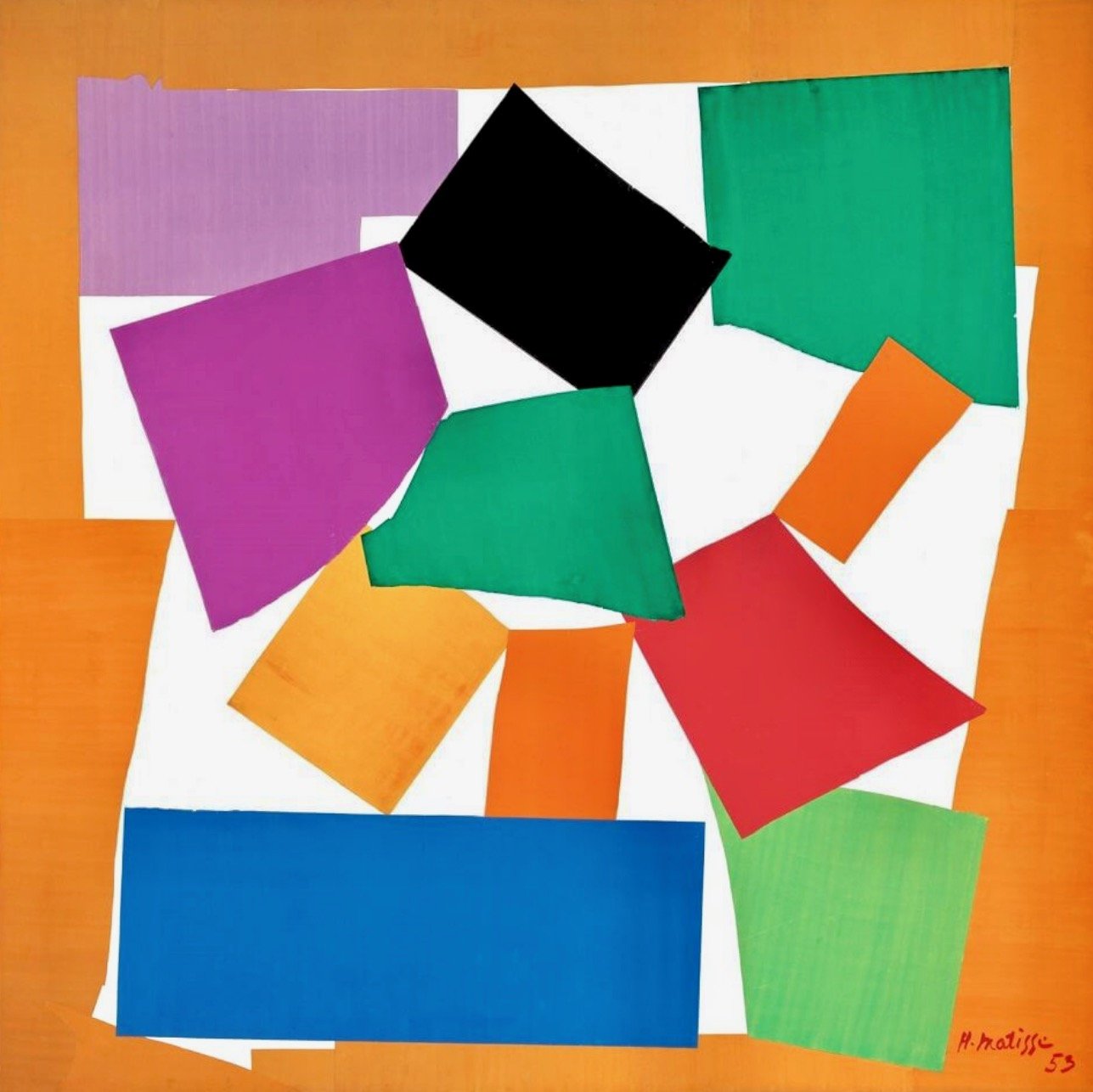For a while I’ve been finding it difficult working with cardboard and wallpaper, despite their light weight and fragility. Given the work I put into leading up to and installing the Winter Show and the decorator debacle soon after, I was drained: mentally, after the damage caused by the decorators I couldn’t face trying to rework them; physically, a flare-up of arthritis meant that my stiffened hands couldn’t rip even wallpaper. Julie F Hill’s description of her crumpled paper sculpture Dark River I (2019) 1 has inspired a slight detour in my project.
Julie F Hill’s Dark River I
Using several rolls of kraft paper, I folded, rolled and twisted them to their full lengths, then moulded them to create coils on the floor and pull up with twine to hang from the ceiling. To add another dimension, I roller-painted several test sheets – flat, crumpled, squashed and held with twine. I made full use of the seminar room to crumple a 25m roll, then paint and lay it on chairs to dry out. The painted effect was akin to the view of snow-topped mountains from above. Drying, it was display in itself, with its length, drapery and folds taking up the length of the room.
Crumpled kraft paper in a coil. Photo Shirley A
Coiled paper hung from the ceiling. Photo Shirley A
Using paper appeals for several reasons, as it did for Matisse in his later years, when illness largely confined him to bed2: the material’s light weight and malleability allows the artist to play and experiment quickly with creating forms on a large scale without pain, and with freedom from art-world parameters. The same qualities also mean that such large sculptures can be easily transported: “Just crumple them up and put them in a bag”.3
Roller-painted crumpled paper resulted in a snow-covered-mountain effect. Photo Shirley A
Crucially, though, in exploring this medium I am energised by this new method and have found a new vocabulary. By putting aside my initial narrative – of the child hiding to reconfigure their world – and concentrating solely on form, light and simple colour, I reveal a story of economy. And, ironically, by doing so I come back to the original context having produced works that have the freshness and energy of a young child, as Matisse did when, nearing death, he created The Snail (1953): “It is so close to a work made by a child of six. It has the freshness, it has the freedom, yet it was very carefully composed,” Serota4
The Snail, Henri Matisse, 1953. Simple in method and use of colour, it has the freshness of a young child’s hand and the considered composition of an adult. Image henrimatisse.org
Pleasing incidentals
By inserting a smaller roll into the knot of the hanging piece created a human-like figure evoking the shape and energy of a Sufi whirling dervish. Then pulling it back with twine to make room for the larger painting test inadvertently produced a tree-like structure that I find more pleasing than my cardboard versions.
Whirling dervish. Photo Shirley A
Held back with twine, the hanging sculpture creates an overhanging tree…
Photo Shirley A
… just like the pear tree in my own garden, which had branches pulled down and back, so the tree would produce more fruit. Photo Shirley A
Whether I use this in my final project or not, I have now created work for the upcoming Spring Show.
1 Julie F Hill, guest lecture, London Metropolitan University, 6 March 2023.
2 Benjamin Wolff, A Second Life: Renewing Ourselves in a Time of Constraints and Isolation, forbes.com, 19 July 2020, <https://www.forbes.com/sites/benjaminwolff/2020/07/19/a-second-life-renewing-ourselves-in-a-time-of-constraints-and-isolation/> [accessed 19 March 2023].
3 Hill, ibid.
4 Nicholas Serota in Henri Matisse: A Cut Above the Rest (2013-2014), online video recording, YouTube, 12 February 2016, <https://www.thehistoryofart.org/henri-matisse/cut-outs> [accessed 19 March 2023].







